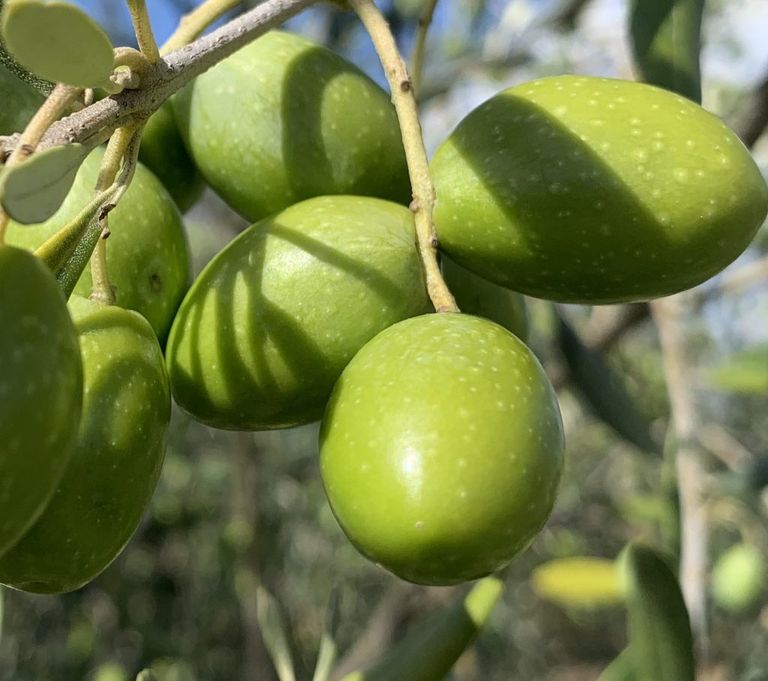Olive Oil Myths Debunked (1/3): Does Geographical Origin Guarantee Quality?

January 21, 2021
Olive oil is a globally beloved product, yet it remains relatively misunderstood by many consumers. Over the years, marketing campaigns from large industrial producers have diverted attention away from the objective criteria for selecting high-quality olive oil.
Alexis Muñoz, an expert élaiologue and renowned olive oil producer recognized by the gastronomic world, is working to dispel myths around this quintessential product. In this series of articles, he gives consumers the tools to make informed decisions when selecting olive oil. You will learn everything about olive oil and how to choose the best oils or the ones you truly enjoy!
Geographical Origin – Variety – Maturity… In this article, we begin by addressing the geographical origin of olive oil, which is often assumed to be an indicator of quality but, in fact, is not a reliable criterion.
Geographical origin does not affect the intrinsic quality of olive oil – it is a subjective factor!
The widespread focus on the origin of olive oil – whether found in supermarkets or at specialty retailers – might lead consumers to believe that origin plays a role in the product’s quality. However, this is not true. While emotional attachment to a region may influence how a consumer perceives a product, the origin of the olive oil is a subjective criterion and doesn’t determine its intrinsic quality, unlike wine, where terroir plays a pivotal role.
It’s crucial to distinguish between objective and subjective criteria when choosing olive oil objective Criteria:
- Olive variety
- Fruit maturity
- Opaque, light-protective packaging
- The producer’s name and reputation
These factors directly influence the intrinsic quality of the olive oil. In contrast, subjective criteria include:
- Price
- Packaging
- Geographical origin
The Case of France:
In France, there’s a strong regional pride, and many consumers will choose an olive oil from their region or a country they favor. However, this preference often ignores the factors that truly affect the quality of the oil.
- Interestingly, France produces less than 3% of the olive oil it consumes. Consumers often prioritize the origin over the true factors that matter, and many will choose an AOC or AOP oil from a region with which they have a connection, or from a country they prefer. Industrial producers are well aware of this and market oils that appeal to this regional pride.
However, it’s important to be aware that many of these oils are blends of different olive varieties. As a result, the unique characteristics of any single variety are often lost, leading to oils that taste neutral or standardized for supermarket distribution. These oils do not reveal the true, distinctive flavors of the olive varieties used.
Beware of Misleading Labels. The origin on many labels is vague or even misleading (“Product of the EU”, “Olive oil from the European Union”). These mentions are often printed in small fonts and might even conceal the true origin of the product. For example, an oil labeled as "French" could actually be produced elsewhere.
In fact, 50% of the olive oils sold in France do not comply with regulations. This highlights the importance of choosing olive oil with care. AOP, AOC, IGP – What Do These Labels Mean? While these labels reassure many consumers, they do not indicate the quality of the product. They only guarantee the authenticity of the place of origin. It’s far better to opt for oils that are free from blending or mixing, that clearly mention the variety of olives, and that provide details on the maturity of the fruit and the producer's name.
“Nature” doesn’t care about the borders humans have set, so the quality of the fruit doesn’t depend on its country of origin.
In Conclusion:
Do not buy olive oil based solely on its country or region of origin. Instead, look for oils that meet the following criteria:
- No blending or mixing, with the specific olive variety clearly stated.
- Information about the maturity of the fruit used.
- The place of production and the name of the producer, who should ideally be a mill owner (not just the olive grower).
Read more

Now it’s the Arbequina’s turn!
Our Arbequina olives have reached their perfect ripeness.
Read more

Alexis Muñoz X Maison Sarah Lavoine
Our collaboration between Maison Sarah Lavoine and Alexis Muñoz is making a big comeback!
Read more

Upgrade to the 18:1 plan!
No need to think about it — your favorite olive oil is delivered straight to your door.
Read more
